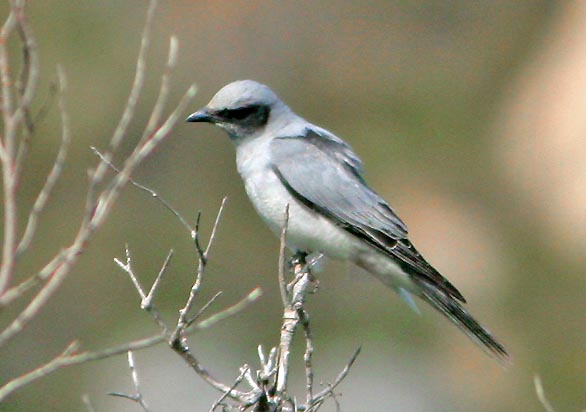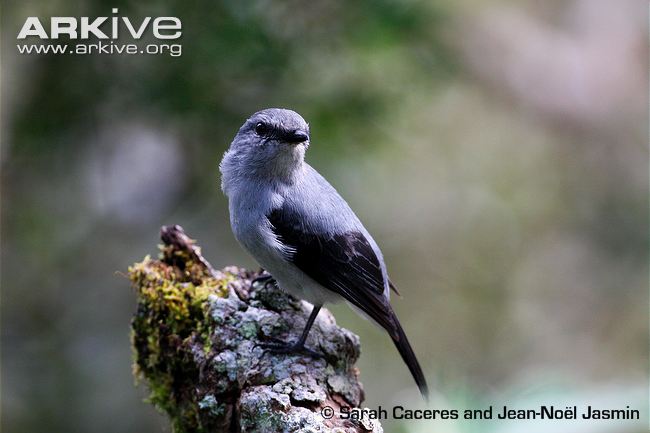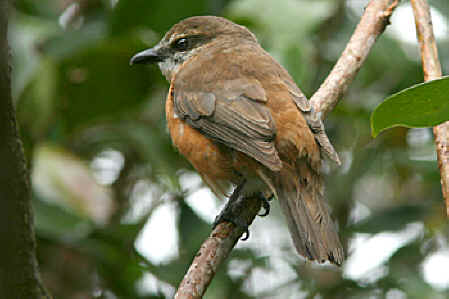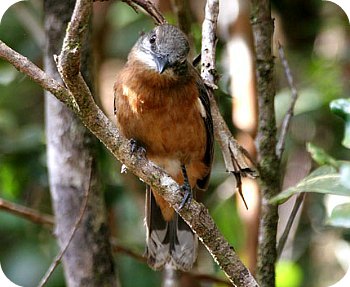
Coracina typica
TAXONOMY
Oxynotus typicus Hartlaub, 1865, Mauritius.
OTHER COMMON NAMES
French: Echenilleur de Maurice; German: Mauritiusraupenfдnger;
Spanish: Oruguero de Mauricio.
PHYSICAL CHARACTERISTICS
8.7 in (22 cm); one male 1.5 oz (43 g). Gray upperparts and
grayish white below with blackish wings; females orange-brown
above and rich orange rufous below.
DISTRIBUTION
South Mauritius.
HABITAT
Canopy of moist tropical evergreen forest above 1,500 ft (460
m); also adjacent degraded or altered forest.
BEHAVIOR
Lives solitarily or in pairs; territorial throughout the year. Unobtrusive
and secretive, but may be located by its melodic trill
and harsh call-note.
FEEDING ECOLOGY AND DIET
It eats mainly large arthropods, including caterpillars, mantids,
stick insects, and beetles, and also geckos.
REPRODUCTIVE BIOLOGY
Highest density 25 territories/km2. Breeds from September to
March, during the rains. Monogamous. The nest is a shallow
cup of fine twigs, lichens, and spider webs, and is attached to a
horizontal tree branch. Both sexes build the nest. The female
lays two eggs; incubation is by both sexes for 24–25 days.
CONSERVATION STATUS
HABITAT
loss and degradation have caused a long-term decline
in the population cinced human colonization and remains a
long-term threat. The species is considered Vulnerable because
of its very small range and population (300–350 pairs in 2000).
Since 1975, its range and density have increased, thanks to
conservation action to rehabilitate native ecosystems.
SIGNIFICANCE TO HUMANS
None known.
Other popular Animals
Photo Gallery of - Mauritius cuckoo-shrike




 Animalia Life
Animalia Life